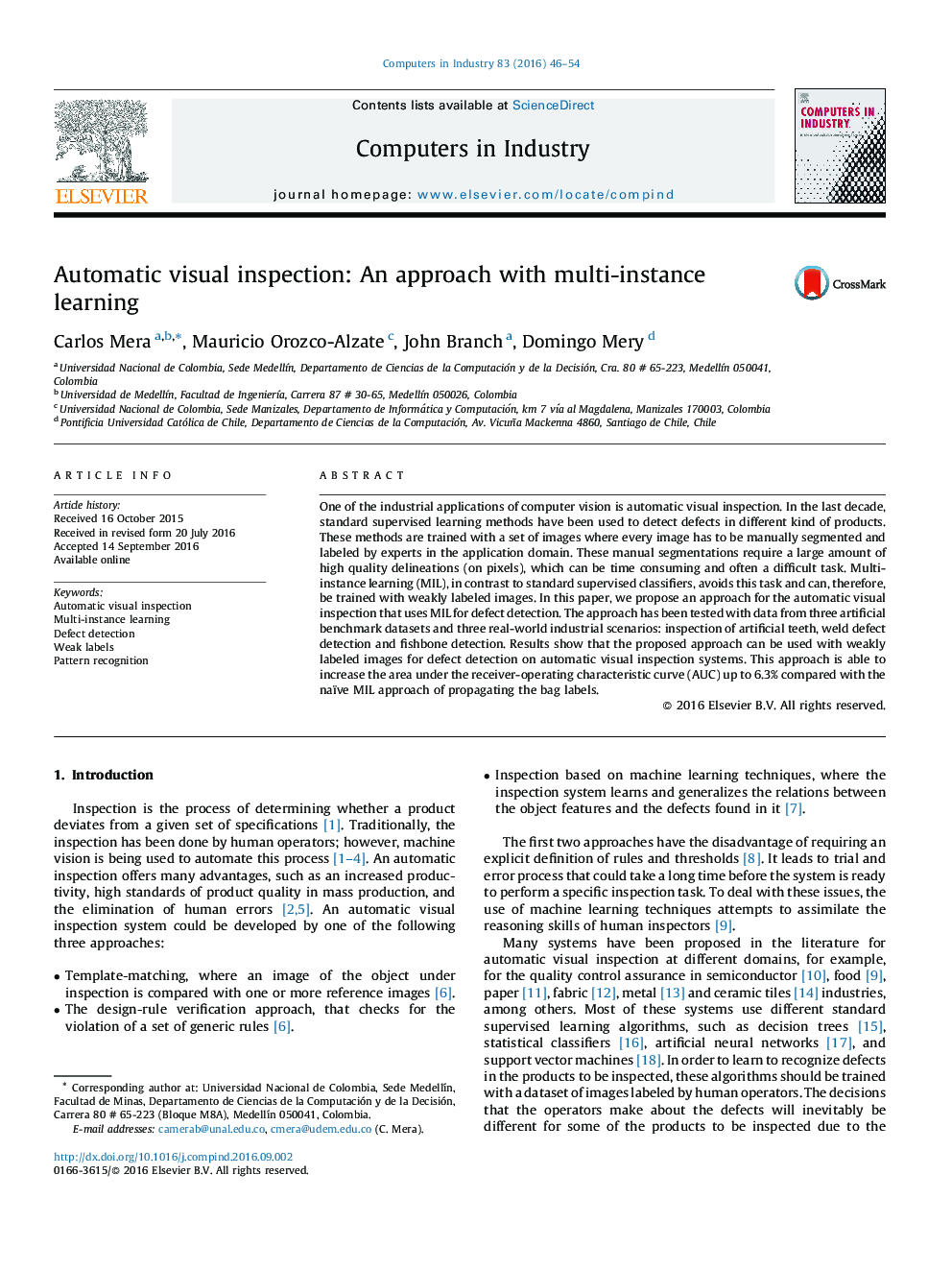| Article ID | Journal | Published Year | Pages | File Type |
|---|---|---|---|---|
| 4965579 | Computers in Industry | 2016 | 9 Pages |
Abstract
One of the industrial applications of computer vision is automatic visual inspection. In the last decade, standard supervised learning methods have been used to detect defects in different kind of products. These methods are trained with a set of images where every image has to be manually segmented and labeled by experts in the application domain. These manual segmentations require a large amount of high quality delineations (on pixels), which can be time consuming and often a difficult task. Multi-instance learning (MIL), in contrast to standard supervised classifiers, avoids this task and can, therefore, be trained with weakly labeled images. In this paper, we propose an approach for the automatic visual inspection that uses MIL for defect detection. The approach has been tested with data from three artificial benchmark datasets and three real-world industrial scenarios: inspection of artificial teeth, weld defect detection and fishbone detection. Results show that the proposed approach can be used with weakly labeled images for defect detection on automatic visual inspection systems. This approach is able to increase the area under the receiver-operating characteristic curve (AUC) up to 6.3% compared with the naïve MIL approach of propagating the bag labels.
Related Topics
Physical Sciences and Engineering
Computer Science
Computer Science Applications
Authors
Carlos Mera, Mauricio Orozco-Alzate, John Branch, Domingo Mery,
